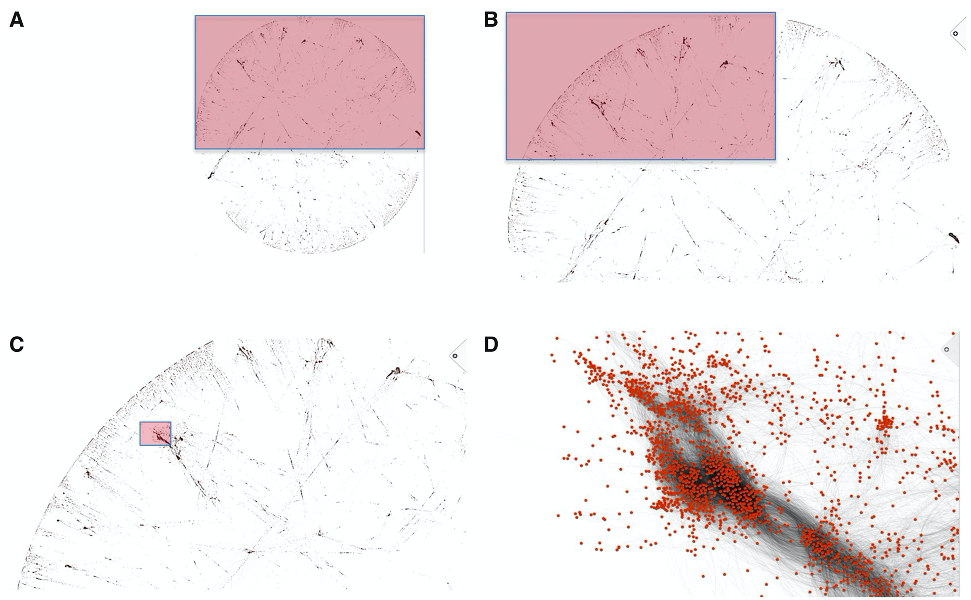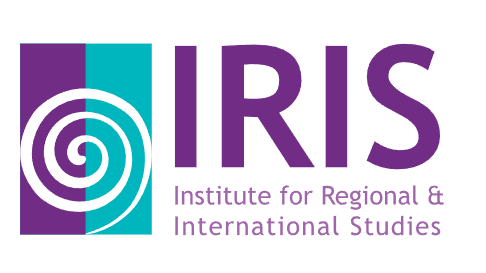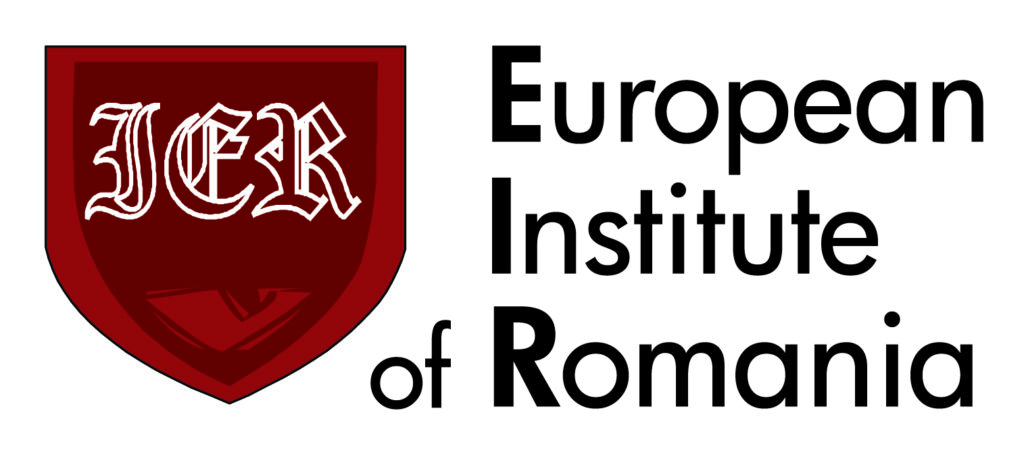Key points:
- There is limited research on the consequences of animal testing, as record-keeping and regulation of all aspects of animal use in research are typically not required by law. Yet, it is known that animal testing uses more than 100 million animals per year, resulting in a significant increase in air pollution, water and soil usage, not to mention the concerns of undesired effects on public health (due to hoarding and maintaining poor living conditions of masses of animals) and the harm done to biodiversity overall.
- In 2019, it was noted that beyond the regulation of chemicals that are brought to the market, thanks to AI, chemists can identify hazardous characteristics before the compounds are even synthesised and applied. The AI software can also help in replacing the unwanted toxic compounds based on the data analysis it may run, making the analytical job of scientists significantly easier and faster.
- When it comes to the introduction of AI, instead of animal testing, there seems to be little need for an additional legislative initiative for the time being. The existing rules provide a framework that would allow for a straightforward way of deployment. What needs to be upheld is the transparency-orientated, cooperative worldwide approach to ensure that artificial intelligence solutions can further develop in order to cover the areas or aspects of drug or cosmetic testing that still remains critical to explore.
Introduction
Animal testing is one of the subject matters that reappears within the public discourse regularly. It can be defined as the use of animals in experiments, usually to determine the efficacy or safety of developed drugs or cosmetics before they are tested in human trials.[1] One matter is the fact that animal testing is generally considered ethically ambiguous, with as many voices supporting the practice as those deeming it unjustified and cruel.[2] What is less commonly discussed, however, is the impact of animal testing on the natural environment – as testing on living organisms has more adverse consequences for the planet’s condition than lab testing. There is limited research on the consequences of animal testing, as record-keeping and regulation of all aspects of animal use in research are typically not required by law. Yet, it is known that animal testing uses more than 100 million animals per year, resulting in a significant increase in air pollution, water and soil usage, not to mention the concerns of undesired effects on public health (due to hoarding and maintaining poor living conditions of masses of animals) and the harm done to biodiversity overall.[3] Having in mind the general efforts to restrain the detrimental effects of climate change, it is only logical that ways to avoid this sort of negative usage of resources are sought. And, as it happens, modern technology has attempted at finding a solution, in the form of artificial intelligence’s (AI’s) assistance.
This report will focus on the question to what extent artificial intelligence can assist in replacing animal testing. It will also see whether the existing legal framework of the European Union may facilitate adaptation of the technology. Lastly, possible recommendations in relation to law or other actions will be provided.
The technology
The first study that ought to be mentioned was conducted by researchers from Johns Hopkins University. The team created a database with input from previously conducted animal studies. Information on 10,000 substances from over 800,000 animal tests was used to create the leading algorithm.[4] The used data came from Europe’s REACH regulation.[5] The code, referred to as ‘Hartung’s software’, after the surname of the leading researcher, determines a substance’s toxicity as it compares it to compounds stored in its database and makes predictions based on the detected properties.[6]Hartung claims that the process imitates how a specialist would analyse a new substance but since the process is facilitated by the algorithm’s specialised potency for calculation and estimation, it is more reliable than the animal test analysis methods.[7] The estimated difference in accuracy was determined at 81% (animals)-87% (algorithm).[8] Hartung’s software showed that a single chemical compound can yield different reactions in different animals.[9] This is supported by findings from other investigations, as it has been shown that few animal models reliably translate into predictions of how a drug will behave on humans.[10]

In 2018, a team of which Hartung was a member as well expanded on the previous effort. The new models, RASARs (read-across structure activity relationship), used binary fingerprints (bits), which present presence or absence of particular substructures in a given molecule,[11] and Jaccard distance, measure of how dissimilar two sets are,[12] to determine chemical similarity, simplifying the investigation process. Simple RASAR models, in cross-validation tests, achieve about 70%–80% accuracy with constraints on tested compounds. Cross validation of data shows accuracy of 80%–95% across 9 health hazards.[13] This only illustrates potential for improvement of the developed technology.
In 2019, it was noted that beyond the regulation of chemicals that are brought to the market, thanks to AI, chemists can identify hazardous characteristics before the compounds are even synthesised and applied. The AI software can also help in replacing the unwanted toxic compounds based on the data analysis it may run, making the analytical job of scientists significantly easier and faster.[14] A type of technique involving AI that has been identified as particularly useful in this area is the Bayesian approach, a method of statistical inference,[15] used when data is messy and the solutions are seemingly unpredictable.[16] This promises that the overwhelming abundance of varied data that could be used will be processed accurately.
Another notable way AI has been utilised has been scrutinised by Verisim Life, an American start-up that has created biosimulations to replace animal testing. The models are designed to mimic or present the real impact of drugs on concrete animals’ biological systems.[17] Limited information on the results of the enterprise have been published.
Existing issues
The EU, as it stands, is split between acceptance of AI testing, for most substances if used for drugs, and a total ban, for cosmetic tests. Officials from the European Chemicals Agency, however, express their scepticism, contemporarily, in regards to replacing animal tests with algorithmic testing.[18] It has also been stated that enough of relevant data on toxicity does not exist, and, hence, could not be used in studies like Hartung’s to generate reliable and sufficiently convincing results – leaving a door open for future uncertainty.[19] Some scientists claim the replacement of animal tests will never be possible due to the complexity of evolution and the amount of factors that need to be taken into consideration to accurately represent the human body.[20] This is an unsubstantiated claim, however, taking the progressing improvement of the technology, the obtained results (described above) and the fact that, as other researchers point out, the results of animal tests are not adequate for humans either.[21]
In 2021, American researchers provided an insight into the significance of data curation for the process of developing AI-based testing. Data curation is the creating, organising and maintaining data sets in a manner that allows verification by people. It is an ongoing control and sorting of data through its lifecycle, depending on the usefulness.[22] It has been identified that models created with uncurated data had a 7–24% higher correct classification rate than the one with curated data, yet the result was inflated because of the high number of duplicates in the training set.[23] Furthermore, other directions for optimisations should include the similarity of employed metrics and prediction for more complex chemical reactions – like the metabolism of substances.[24]
Lastly, it has been acknowledged that there are issues with staff availability and funds shortage, which effectively limit the opportunities to provide training that would match the expectations and the amounts of AI data that are to be processed and overseen.[25] This is an important issue to handle if the technology is to gain momentum and the points brought up by the sceptical experts are to be clarified.
Law
As has been pointed out, such an informatics study as Hartung’s has only been possible to have been carried out because of ‘Europe’s very progressive substance safety legislation’.[26] In the EU, testing on finished cosmetic products has been prohibited since 2004, with a ban on testing ingredients or combination of ingredients having followed in 2009.[27]
Beyond the REACH bill, a relevant data legislation to note would be the upcoming Data Governance Act, which was presented by the European Commission at the end of 2020 and is still under works.[28] The sought framework will facilitate the access to data in business-to-business (B2B) relationships, and, mostly, the re-use of the public sector data and the sharing of personal and non-personal data.[29] It has been acknowledged as an essential element to enable expansion of sustainable data services,[30] and may be considered crucial to uphold and facilitate the development of AI testing. The trading of data and sharing of information will open new research possibilities and encourage knowledge exchange, by making such transactions more regulated and stable. Notably, selected aspects of the use storage of the data may be relevant under the Database Directive.[31]
Yet, there is another comprehensive existing legal act, which must be taken into consideration while one dissects the needed base framework — Directive on the protection of animals used for scientific purposes.[32] As acknowledged within the recital 10 to the Directive, the legal act is a step towards the replacement of procedures on live animals for any purposes as soon as possible. This is reflected, to an extent, in the binding articles and in the REACH Regulation.[33] Hence, it can be agreed that the EU strives towards replacing animal tests, yet the goal’s rendition has not been assured by law. A consultation on whether the replacement of animal tests with other methods was possible was run between 2010-2011 – with a result that answered the question to the negative.[34]
According to Article 4 of the Directive:
- Member States shall ensure that, wherever possible, a scientifically satisfactory method or testing strategy, not entailing the use of live animals, shall be used instead of a procedure.
- Member States shall ensure that the number of animals used in projects is reduced to a minimum without compromising the objectives of the project.
This illustrates that, in principle, if AI is capable of replacing animal tests, it is to be used.[35] Hence, the question would be whether the technology is advanced enough to be applied. Before that is even considered, one must note subparagraph 4, of the same Article:
4. This Article shall, in the choice of methods, be implemented in accordance with Article 13.
Article 13 obliges the use of a method which does not involve the use of animals; nevertheless, it does permit the use of animal testing in case the other method is banned by national law. It must be endured that no national legislation which could potentially ban the use of AI is introduced, not to create regulatory hurdles. It is a fair concern to have, considering that certain legislatures are sceptical of AI as a whole, and safeguards they put in place may also intersect the area of drug/cosmetic testing. Precaution towards the technology has been mandated by the UN, after the publication of a report prepared by the U.N. Human Rights Office.[36] Even though the report addresses concerns matters of privacy and discrimination, one may not oversee that the general negative attitude could illuminate. Even if the degree to which the technology has been developed is not satisfactory as of now, the EU ought to draw the attention of the national legislators to prevent any bans. Intensified Community discourse may also encourage Member State scientists to enrich the existing research.
Conclusion
When it comes to the introduction of AI, instead of animal testing, there seems to be little need for an additional legislative initiative for the time being. The existing rules provide a framework that would allow for a straightforward way of deployment. What needs to be upheld is the transparency-orientated, cooperative worldwide approach to ensure that artificial intelligence solutions can further develop in order to cover the areas or aspects of drug or cosmetic testing that still remain critical to explore. What is of key importance is the prevention of bans on the technologies that could replace animal tests once the assessment of sufficiency and adequacy falls in favour of AI solutions. Protection of due diligence when it comes to obtaining and handling data ought to be prioritised, in a manner that satisfies the public, also increasing the chances of securing the public’s approval of use. The above-mentioned information proves that the replacement of animal tests with AI solutions is potentially feasible and not decreasing the chances of conducting accurate tests. This is conditional on finding ways of data scrutiny and optimisation that is sufficiently reliable for tests and application of appropriate software.
The arguments of the ability to reduce the usage of resources, ending the suffering of millions of animals and minimising the costs of testing only speak in the favour of pursuing the technologies further. It is recommended that efforts are put to improve on the obtained findings and, with time, that the European Commission conducts yet another consultation to evaluate the progress made since 2011.
[1] ‘Animal testing’ (Biology Online) <https://www.biologyonline.com/dictionary/animal-testing> accessed 01 January 2022.
[2] For example, in: S Festing and R Wilkinson, ‘The ethics of animal research. Talking Point on the use of animals in scientific research’ (2007) 8 EMBO Rep. 526-530; V Baumans, ‘Use of animals in experimental research: an ethical dilemma?’ (2004) 11 Gene Therapy 64; J R Garett, The Ethics of Animal Research: Exploring the Controversy (MIT Press 2012).
[3] K Groff, E Bachli, M Lansdowne and T Capaldo, ‘Review of Evidence of Environmental Impacts of Animal Research and Testing’ (2014) ISSN 2076-329; J Ellis, M Hall, P Ong, L Wege, N Paterson and C Smith, ‘Animal Testing at Dalhousie University: A brief insight into social, economic, and environmental effects of nonhuman animal testing’ <https://cdn.dal.ca/content/dam/dalhousie/pdf/science/environmental-science-program/ENVS%203502%20projects/2010/AnimalTesting.pdf> accessed 16 August 2022.
[4] J Carfagno, ‘Can Artificial Intelligence Replace Animal Testing?’ (DocWireNews, 9 May 2019) <https://www.docwirenews.com/docwire-pick/future-of-medicine-picks/can-artificial-intelligence-replace-animal-testing/> accessed 5 January 2022.
[5] A King, ‘AI tool could save on animal tests’ (Chemistry World, 24 July 2018) <https://www.chemistryworld.com/news/ai-tool-could-save-on-animal-tests/3009286.article> accessed 5 January 2022; Regulation (EC) No 1907/2006 of the European Parliament and of the Council of 18 December 2006 concerning the Registration, Evaluation, Authorisation and Restriction of Chemicals (REACH), establishing a European Chemicals Agency, amending Directive 1999/45/EC and repealing Council Regulation (EEC) No 793/93 and Commission Regulation (EC) No 1488/94 as well as Council Directive 76/769/EEC and Commission Directives 91/155/EEC, 93/67/EEC, 93/105/EC and 2000/21/EC [2006] L 136/3.
[6] The study has been published in: T Luechtefeld, D Marsh, C Rowlands and T Hartung, ‘Machine Learning of Toxicological Big Data Enables Read-Across Structure Activity Relationships (RASAR) Outperforming Animal Test Reproducibility’ (2018) 165 Toxicological Sciences 198.
[7] J Carfagno, ‘Can Artificial Intelligence Replace Animal Testing?’ (DocWireNews, 9 May 2019) <https://www.docwirenews.com/docwire-pick/future-of-medicine-picks/can-artificial-intelligence-replace-animal-testing/> accessed 5 January 2022.
[8] A King, ‘AI tool could save on animal tests’ (Chemistry World, 24 July 2018) <https://www.chemistryworld.com/news/ai-tool-could-save-on-animal-tests/3009286.article> accessed 5 January 2022.
[9] J Carfagno, ‘Can Artificial Intelligence Replace Animal Testing?’ (DocWireNews, 9 May 2019) <https://www.docwirenews.com/docwire-pick/future-of-medicine-picks/can-artificial-intelligence-replace-animal-testing/> accessed 5 January 2022.
[10] H Santos, ‘The challenges in moving beyond animal models in research’ (Advanced Science News, 4 October 2020) <https://www.advancedsciencenews.com/the-challenges-in-moving-beyond-animal-models-in-research/> accessed 5 January 2022.
[11] J Cheminf, ‘Molecular fingerprints and similarity searching’ (2011) 33 The Open Babel GUI <https://openbabel.org/docs/dev/Fingerprints/intro.html> accessed 27 February 2022.
[12] ‘Jaccard Index/Similarity Coefficient’ (Statistics how to) <https://www.statisticshowto.com/jaccard-index/> accessed 27 February 2022.
[13] T Luechtefeld, D Marsh, C Rowlands and T Hartung, ‘Machine Learning of Toxicological Big Data Enables Read-Across Structure Activity Relationships (RASAR) Outperforming Animal Test Reproducibility’ (2018) 165 Toxicological Sciences 198.
[14] T Hartung, ‘Opinion: AI Beats Animal Testing at Finding Toxic Chemicals’ (The Scientist, 1 May 2019) < https://www.the-scientist.com/critic-at-large/opinion–ai-beats-animal-testing-at-finding-toxic-chemicals-65795> accessed 27 February 2022.
[15] ‘Bayesian analysis’ (Britannica) <https://www.britannica.com/science/Bayesian-analysis> accessed: 05 March 2022.
[16] K Delsh, ‘Artificial Intelligence may soon replace drug testing on animals—well, at least a huge part of it’ (TechTalks, 16 July 2018) <https://bdtechtalks.com/2018/07/16/artificial-intelligence-replace-animal-drug-test/> accessed 8 January 2022; M Kukacka, Bayesian Methods in Artificial Intelligence (WDS’10 Proceedings of Contributed Papers, Part I 2010) 25.
[17] P Sawers, ‘Verisim Life uses AI-powered biosimulations to replace animal drug testing’ (Venture Beat, 14 August 2019) <https://venturebeat.com/2019/08/14/verisim-life-uses-ai-powered-biosimulations-to-replace-animal-drug-testing/> accessed 27 February 2022.
[18] J Carfagno, ‘Can Artificial Intelligence Replace Animal Testing?’ (DocWireNews, 9 May 2019) <https://www.docwirenews.com/docwire-pick/future-of-medicine-picks/can-artificial-intelligence-replace-animal-testing/> accessed 5 January 2022.
[19] A King, ‘AI tool could save on animal tests’ (Chemistry World, 24 July 2018) <https://www.chemistryworld.com/news/ai-tool-could-save-on-animal-tests/3009286.article> accessed 5 January 2022.
[20] J C Marvison, ‘Computer models are not replacing animal research, and probably never will’ (Speaking of Research, 7 January 2020) <https://speakingofresearch.com/2020/01/07/computer-models-are-not-replacing-animal-research-and-probably-never-will/> accessed 27 February 2022.
[21] P Sawers, ‘Verisim Life uses AI-powered biosimulations to replace animal drug testing’ (Venture Beat, 14 August 2019) <https://venturebeat.com/2019/08/14/verisim-life-uses-ai-powered-biosimulations-to-replace-animal-drug-testing/> accessed 27 February 2022.
[22] M Knight, ‘What Is Data Curation?’ (Dataversity, 25 December 2017) <https://www.dataversity.net/what-is-data-curation/#> accessed 27 February 2022.
[23] V M Alves et al., ‘Curated Data In — Trustworthy In Silico Models Out: The Impact of Data Quality on the Reliability of Artificial Intelligence Models as Alternatives to Animal Testing’ (2021) 49 Alternatives to Laboratory Animals 73.
[24] T Luechtefeld, D Marsh, C Rowlands and T Hartung, ‘Machine Learning of Toxicological Big Data Enables Read-Across Structure Activity Relationships (RASAR) Outperforming Animal Test Reproducibility’ (2018) 165 Toxicological Sciences 198.
[25] P Ezanno et al., ‘Research perspectives on animal health in the era of artificial intelligence’ (2021) 52 Veterinary Research 40.
[26] A King, ‘AI tool could save on animal tests’ (Chemistry World, 24 July 2018) <https://www.chemistryworld.com/news/ai-tool-could-save-on-animal-tests/3009286.article> accessed 5 January 2022.
[27] ‘Ban on animal testing’ (European Commision) <https://ec.europa.eu/growth/sectors/cosmetics/ban-animal-testing_en> accessed 27 February 2022; Regulation (EC) No 1223/2009 of the European Parliament and of the Council of 30 November 2009 on cosmetic products (Text with EEA relevance) [2009] OJ L 342.
[28] February 2022.
[29] A Linck, ‘Data Governance Act: DIGITAL SME welcomes Commission’s proposal to strengthen data sharing in the EU’ (2021) European Digital SME Alliance <https://www.digitalsme.eu/data-governance-act/> accessed 14 December 2021.
[30] ‘The EU Data Protection Reform and Big Data’ (2016) European Commission 2.
[31] Directive 96/9/EC of the European Parliament and of the Council of 11 March 1996 on the legal protection of databases [1996] L 77/20.
[32] Directive 2010/63/EU of the European Parliament and of the Council of 22 September 2010 on the protection of animals used for scientific purposes.
[33] What can be traced in, for example, Recital 47, 64 or Article 25 Regulation (EC) No 1907/2006 of the European Parliament and of the Council of 18 December 2006 concerning the Registration, Evaluation, Authorisation and Restriction of Chemicals (REACH), establishing a European Chemicals Agency, amending Directive 1999/45/EC and repealing Council Regulation (EEC) No 793/93 and Commission Regulation (EC) No 1488/94 as well as Council Directive 76/769/EEC and Commission Directives 91/155/EEC, 93/67/EEC, 93/105/EC and 2000/21/EC [2006] L 136/3.
[34] ‘Ban on animal testing’ (European Commision) <https://ec.europa.eu/growth/sectors/cosmetics/ban-animal-testing_en> accessed 27 February 2022.
[35] This is not surprising taking that the EU has been leading in the research to find alternative ways to animal testing, the prime example of that being the fact that the research cenre tasked with the challenge was opened in 1991 and runs until today. Per ‘On a 30-year mission to replace animal tests with alternative methods’ (European Commission, 3 January 2021) <https://ec.europa.eu/jrc/en/news/30-year-mission-replace-animal-tests-alternative-methods> accessed 7 Janaury 2022.
[36] Report of the United Nations High Commissioner for Human Rights, The right to privacy in the digital age (Human Rights Council Forty-eighth session 13 September–1 October 2021).

IF YOU VALUE THE INSTITUTE OF NEW EUROPE’S WORK, BECOME ONE OF ITS DONORS!
Funds received will allow us to finance further publications.
You can contribute by making donations to INE’s bank account:
95 2530 0008 2090 1053 7214 0001
with the following payment title: „darowizna na cele statutowe”
Main photo source: Pixabay

































Comments are closed.